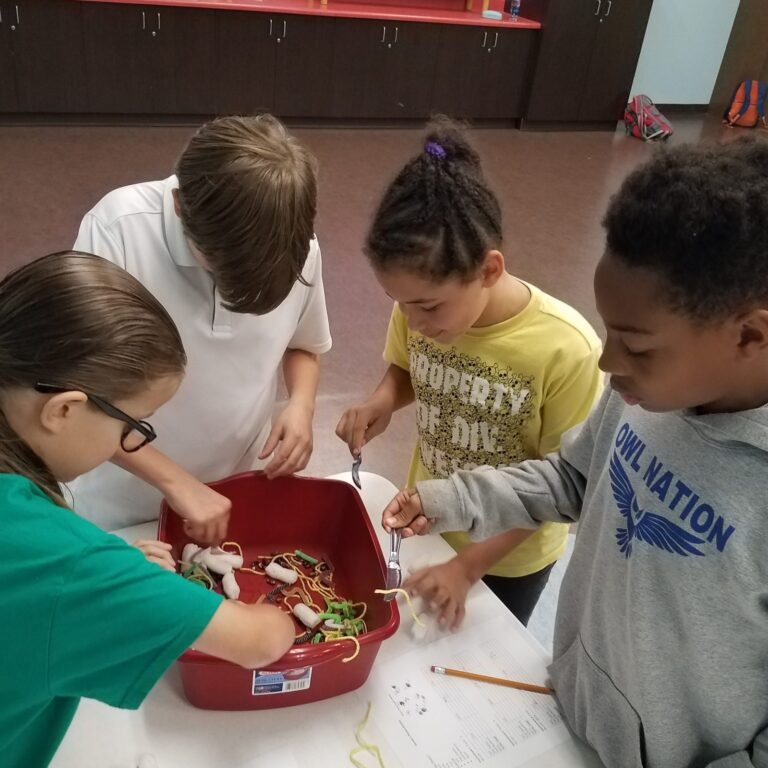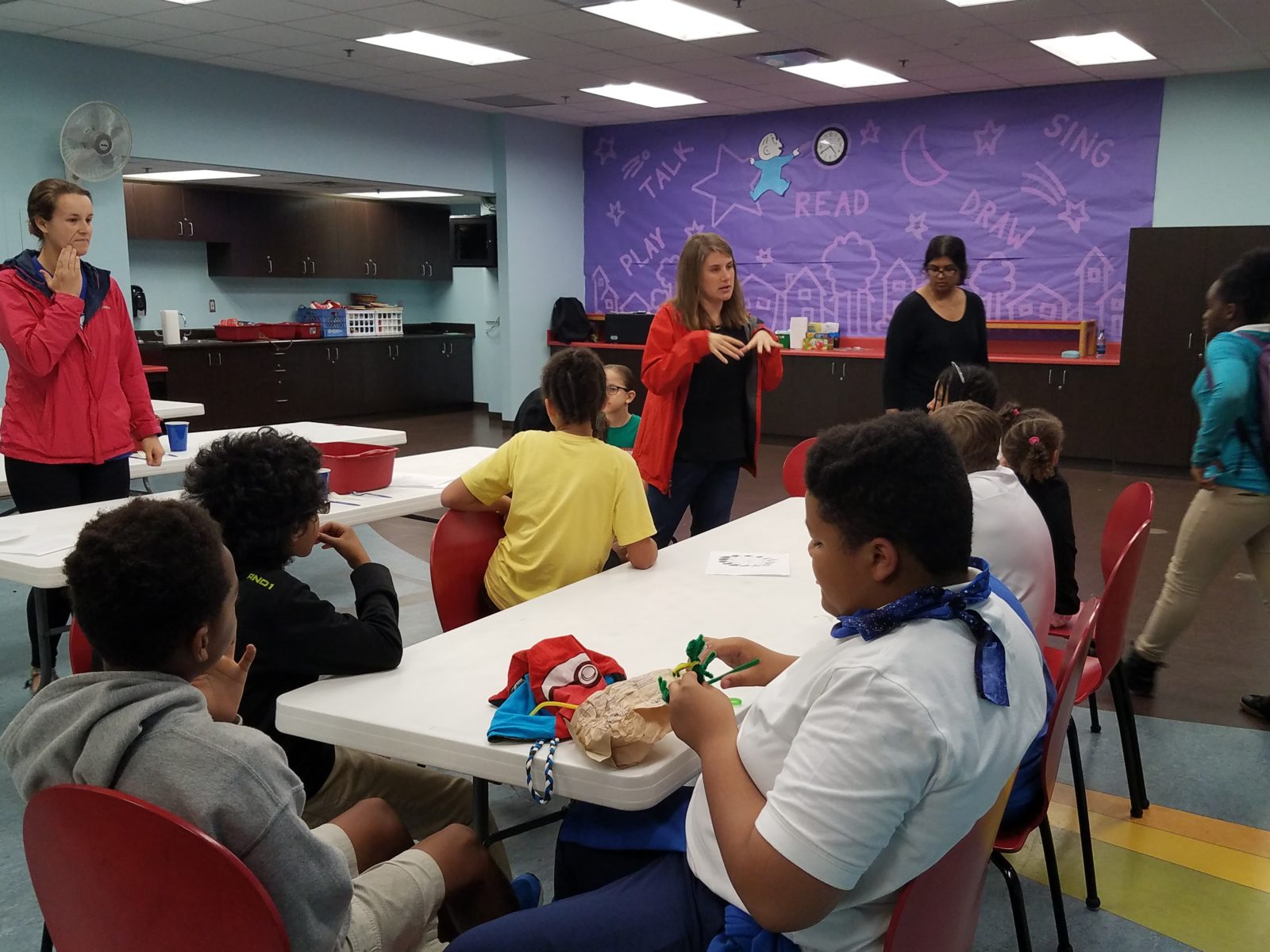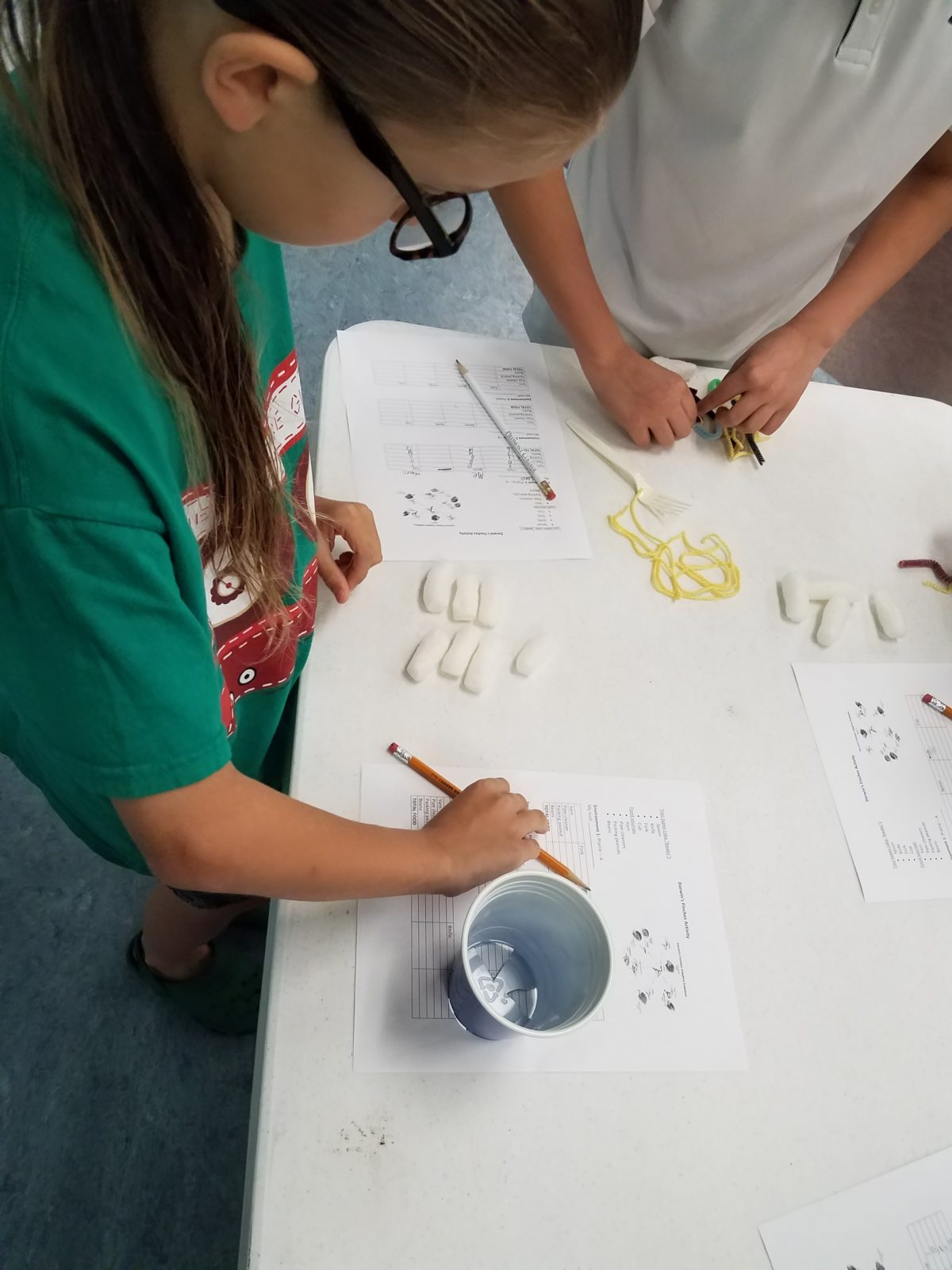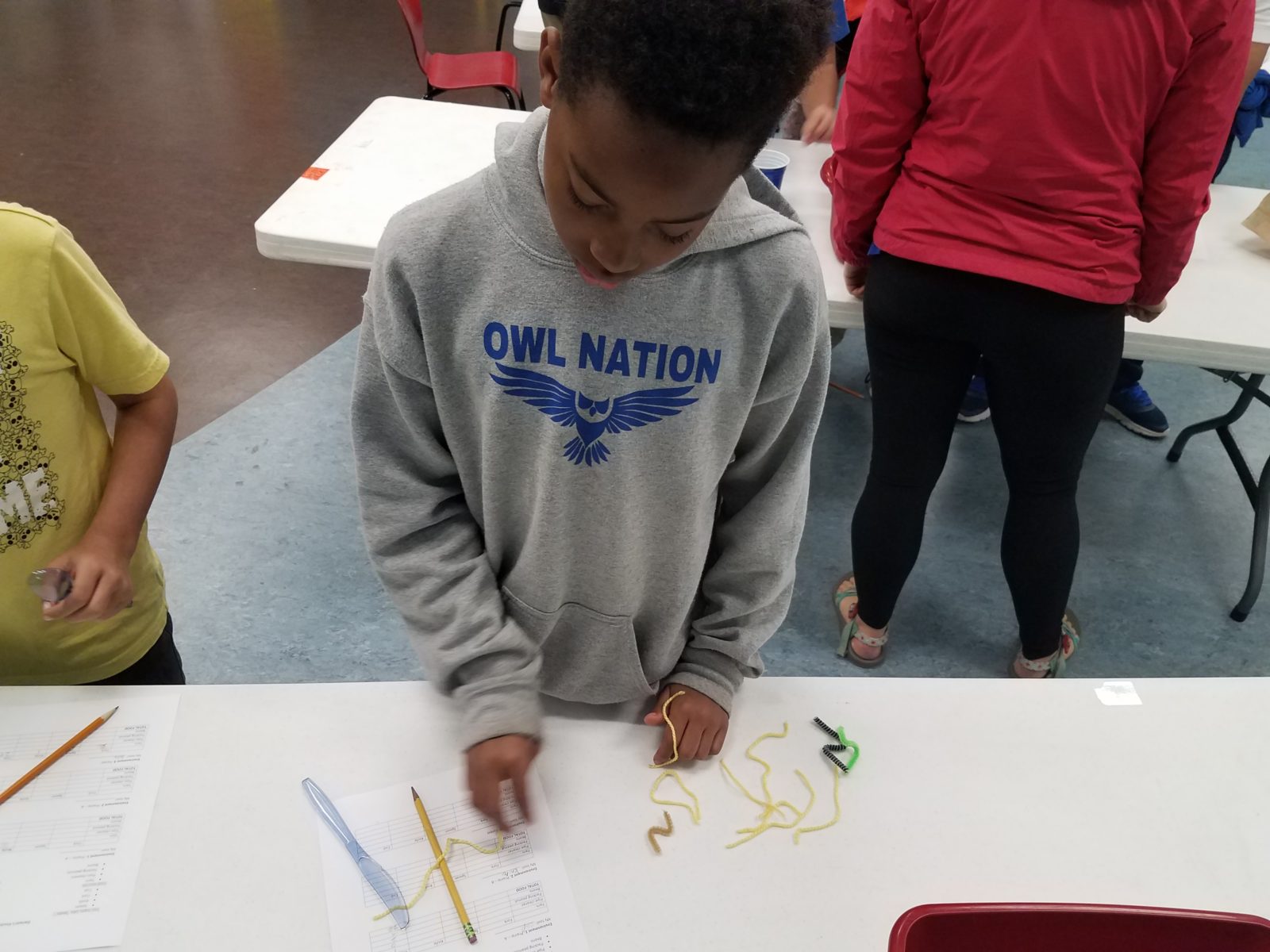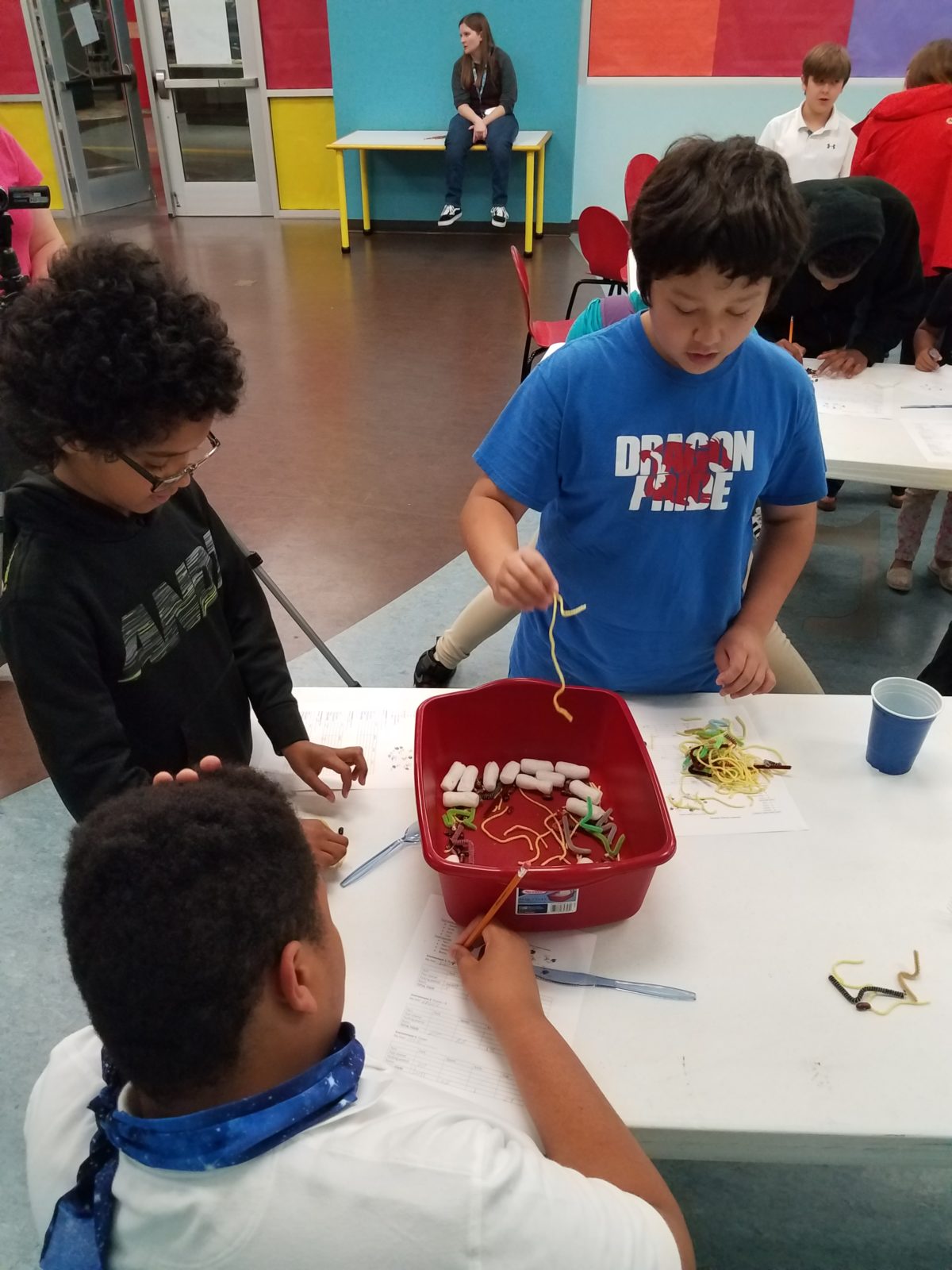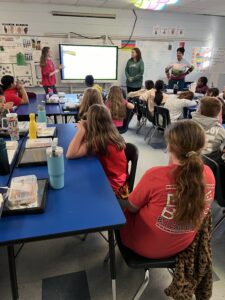All aboard the HMS Beagle, we’re headed to the Galápagos Islands to learn about Darwin’s famous finches and adaptive radiation! For this month’s library event, EcoReach hosted an ultimate foraging showdown to illustrate the advantages of niche partitioning via adaptive radiation.
As EcoReacher Kelsey explained, in the case of Darwin’s finches, slight changes in beak size and shape in finch populations over millions of years allowed one species of finch to diverge into 14 different species that eat different types of food. Differently shaped and sized beaks allow the finches to exploit different prey resources, which reduces competition between the birds and lessens the chances of over-exploitation of a single resource.
The activity allowed teens to see for themselves how different “beak morphologies” influenced what food resources they could access and how differences in the environment also impacted their foraging success. Since we were short on finch beaks, we used different tools, including a fork, spoon, knife, and plastic cup to simulate different beak types. Within our tub environments, foragers could snag a juicy packing peanut, a long piece of yarn, a worm-like pipe cleaner, or a small kidney bean as their prey. Just like the real world, prey diversity (the relative numbers and types of prey present) and environmental conditions (open environment vs. dense aluminum foil “forest”) varied.
After 60 seconds of no-beaks-barred competition, the foragers counted up their prey items and compared tallies to determine which tool worked best in the environment.
Some beak types worked best for a particular type of food, creating specialist foragers who focused on gathering that one type of food.
Other beak types were efficient in capturing a variety of prey and these generalist foragers snatched any food items that they could find.
EcoReacher Carolyn wrapped up the activity with a group discussion about how some tools worked better for certain prey items and were more or less efficient depending on the prey availability and structure of environment. The teens did a great job connecting their experiences with various tools and environments during the activity back to Darwin’s finches.
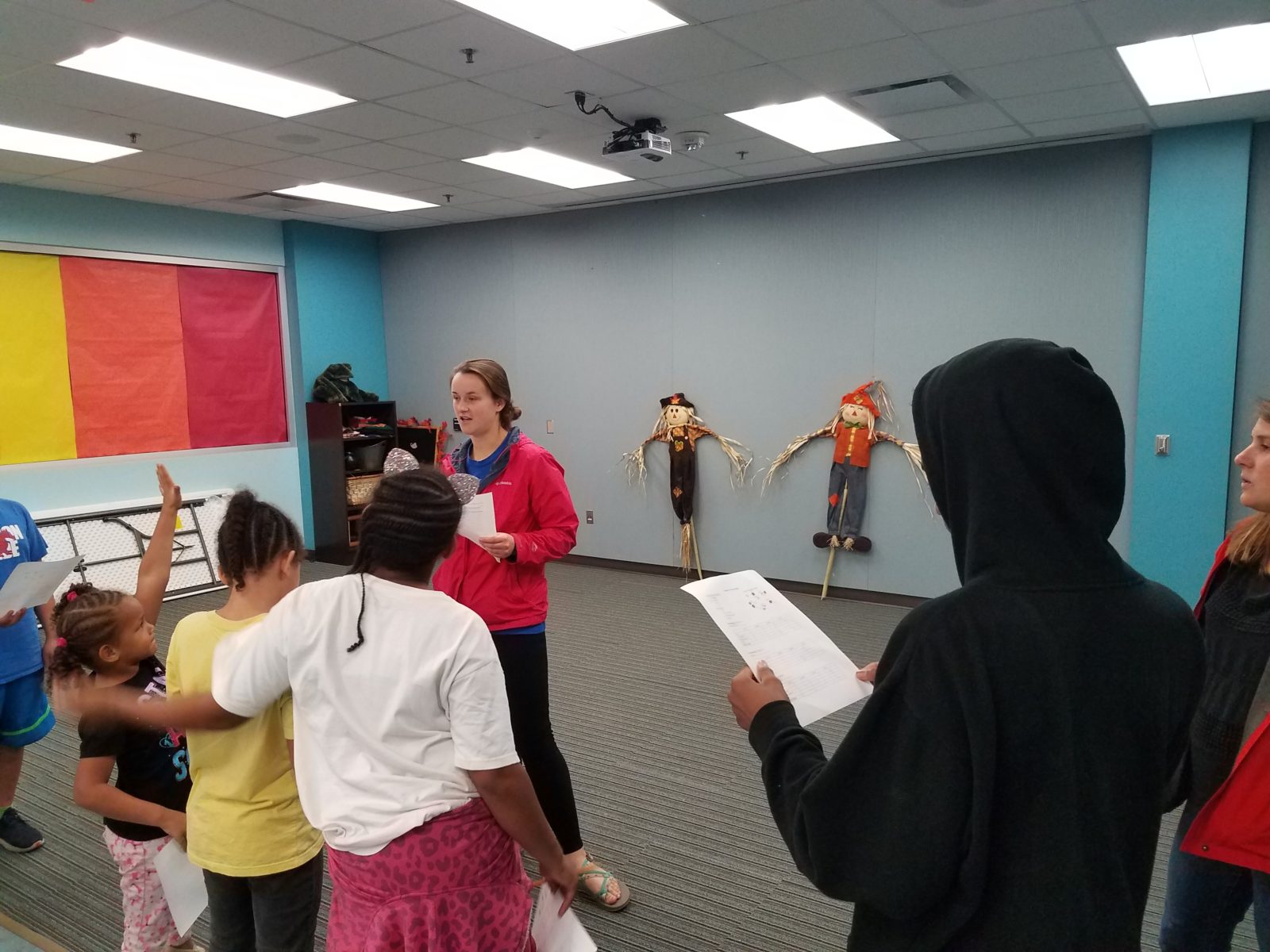
They predicted that large, curved beaks might be best for crushing seeds while smaller beaks may offer the greater dexterity needed to grasp insect prey in complex environments. Thanks so much to everyone who came to the library and had fun with us! Learn more about adaptive radiation here!

